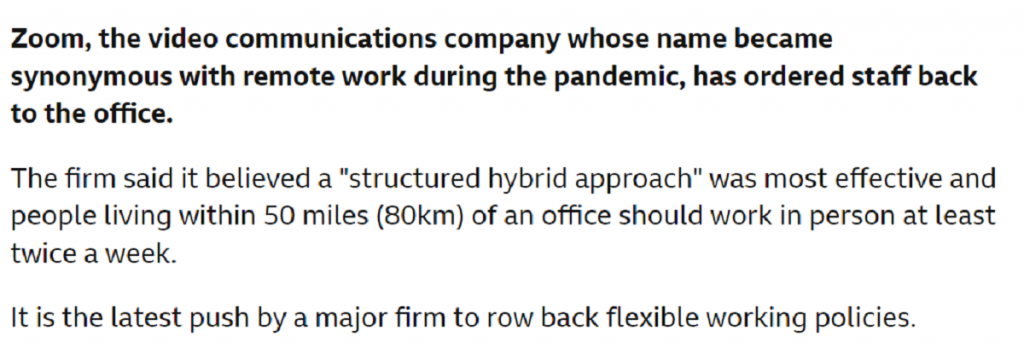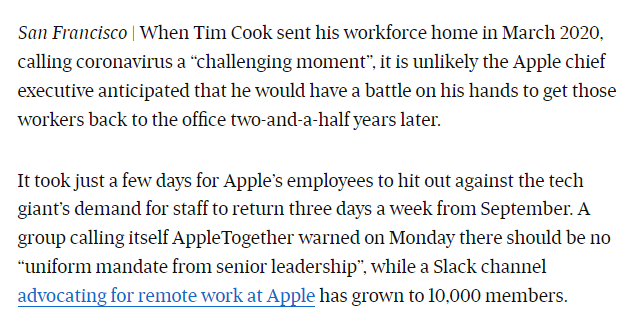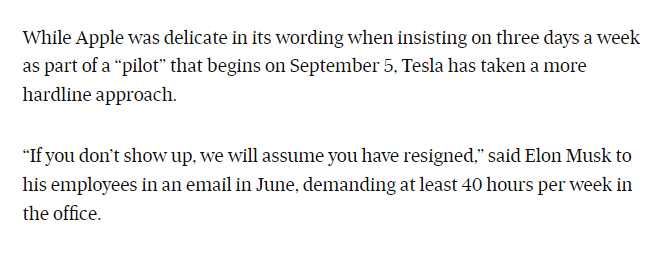Prior to the COVID-19 pandemic, almost all software development companies worked in offices. Some tinkered with the idea of working from home but only for one to two days per week.
More importantly: working remotely was more of a bonus rather than an expected setup.
A lot has changed since the pandemic happened. It has given us multiple options on how we approach work.
- Fully remote
- Fully in-office
- Hybrid
But what really is the best way to run a software development company post-pandemic?
Zoom Comes Back to the Office
I recently came across an interesting article that mentioned Zoom — a telecommunications company that brought people together through the pandemic with its meeting and collaboration software.

Apparently, Zoom has asked their employees to come back to the office and work on a hybrid basis. Let’s have a quick at what the article says:

How interesting is that?
Zoom — the same company that pushed people to work from home during the pandemic and use their collaboration software — is now expecting their staff to return to the office post-pandemic.
The article continues:

I want to ask: what exactly is a “hybrid working setup”?
Generally, employees work in the office on some days and at home on others. I see two to three days as the median for when people go to the office in a hybrid approach.
But is it really the best approach today? What is the best work setup for getting the most out of developers and attracting the best talent?
To answer that, let’s first look into a fully remote setup.
Zapier: Remote Work’s Info-Sharing Benefits
I’m going to refer to another article I found about Zapier, a large low-code automation platform that has a fully remote work setup.

The article continues:

I 100% agree with this.
If you have a fully remote workforce, you can share documents far easier than in an office environment.
In an office environment, people have more organic ways to share information. Examples include watercooler or hall discussions. They can talk to their colleagues at their desks.

Meanwhile, a remote environment changes a lot of that. People won’t see each other often so they can’t talk as much as when they’re in an office.
As a result, you must have clearly defined structures around how the team shares information and creates documentation.
In a larger company of 100 to 1,000 staff members, you must have those defined processes anyway. A staff of 100 in a fully in-office environment won’t see each other on a daily basis, so proper information dissemination is a must.
This is where a fully remote setup excels: it instills the great practice of proper information-sharing early on. It ensures you have good documentation processes that let your staff know what’s happening even during your company’s early days.
Let’s look at another example.
Here’s yet another article I found about remote work, this time focusing on Atlassian’s “Team Anywhere” policy.

Similar to Zapier, Atlassian asks their employees to get together four times a year in the office.
This is an important point to remember.
The Benefits of Meeting Together
Flying Donkey also operates on a fully remote working policy. Similar to Zapier and Atlassian, we run multiple events each year to get all of our staff together to interact with each other.
This is a fantastic approach.
Why?
People knowing their workmates in person brings great communication and collaboration. This is where meeting up with colleagues a number of times a year becomes crucial.
For example:
I personally fly out to our Turkey office once or twice a year and bring all nearby teammates together. The same is true for our other teams — we get together once or twice a year and catch up over lunch, dinner, or while playing pool at the local pub.
Overall, working remotely offers many benefits. You get a more structured communication process with your team and save a lot on overheads. You can spend those savings on events that bring your team together, which leads to other great benefits.
Now let’s have a look at the hybrid policy.
Apple and Tesla Adopts The Hybrid Approach
Companies are adopting the hybrid approach in different ways. We’re going to look at another couple of companies that have this policy and see how it may apply to your own setup.

Here’s an article from The Guardian about Apple:

A little further into the article, we see:

The similarity between Tesla and Apple is they’re looking to shift the working setup from remote to hybrid and even fully in-office. They’re pushing people to collaborate more and work together.
Now, I want to highlight a few of the interesting issues that arise from a hybrid working environment — I’ve experienced some of these myself.
The “Second-Class Citizens”
Imagine you’re in a meeting in the office with four or five people, and then there are two or three people working from home. You’ll have a quasi-in-office-but-remote meeting.

The problem is the conversation isn’t the same for all people. The conversations between the in-office teammates are far more fluid than those who are in the meeting remotely. Some of the conversations are also lost on them.
On the flip side, if all those people are working remotely, no conversation will be lost — because they won’t be seeing body language or anything that can’t be said.
What I’m saying is: you need to be either fully in-office or fully remote.
You don’t want to create more second-class citizens in your team. However, Apple and Tesla may be going in this direction because they’re forcing the hybrid model.
Real Estate Costs
You also have to think about the cost of real estate and hot desking when you adopt the hybrid approach.

There are two ways to do the hybrid schedule:
- Come to the office on whichever three days you prefer.
- Come to the office on set days.
The problem: real estate is a fixed asset.
Even if your team comes in only three days a week, you have to have a full set of desks for a full set of staff.
In other words, you lose some of the advantages of remote working. You don’t get lower real estate costs.
Some hybrid working companies try to rent out some of the office space with the assumption that people will be in four days a week. But when everyone turns up on the same day, there aren’t enough desks for them.
So… What’s the Best Working Setup Post-Pandemic?
Let’s summarize the points I’ve discussed.
First, there are three approaches to working after the pandemic.
- Fully remote
- Fully in-office
- Hybrid
SaaS development companies are in a unique spot in that we’re well-attuned to working fully from home. There’s a huge amount of jobs in the world where working from home isn’t even an option.
Nonetheless, people have seen the great benefits of working remotely:
- Greater productivity
- Happier workforce
- More time saved

Meanwhile, bosses are also cognizant of the benefits of an office environment. So they’re pushing for a hybrid approach. But like I said, such an approach comes with challenges:
- Creation of secondary citizens
- Loss of real estate savings
Best of Both Worlds for Flying Donkey
At Flying Donkey, we operate fully remotely and put clear documentation processes in place. This also results in cost savings, and we put these savings into in-person meetings over the course of the year.
That way, we get the best of both worlds. People collaborate and get to know each other. At the same time, we’ve opened our boundaries and can recruit far and wide.
The Bottom Line
What’s the best work setup in 2023 and beyond? There’s no perfect answer here. But as Zoom has shown: even when you’re in the remote working space and pushing for software that helps collaboration, sometimes you just have to return to the office.





